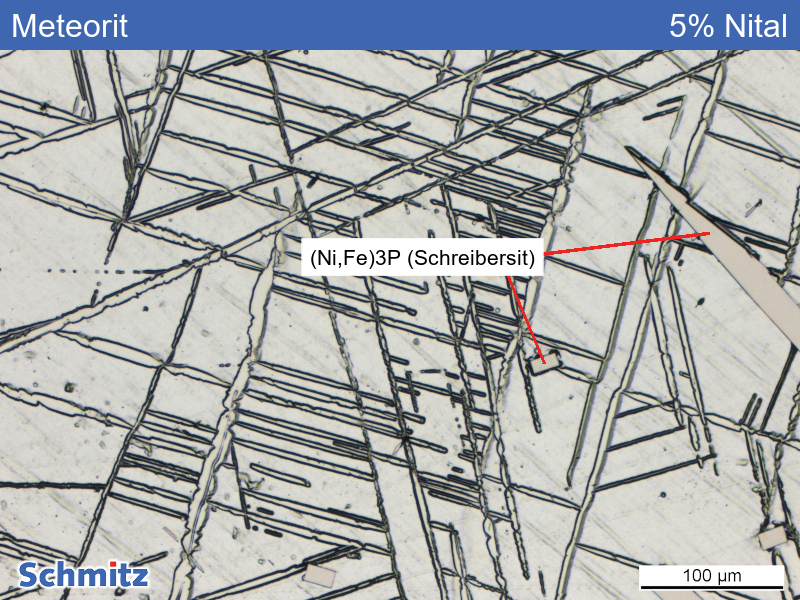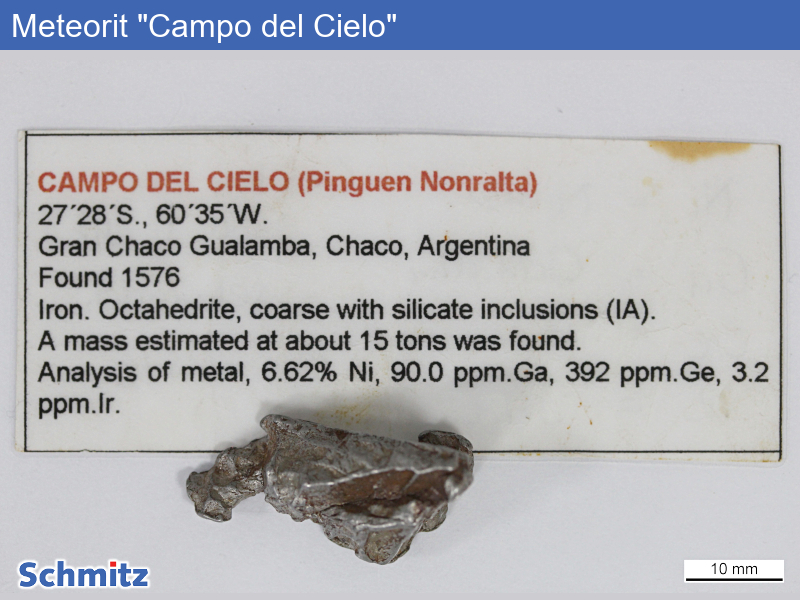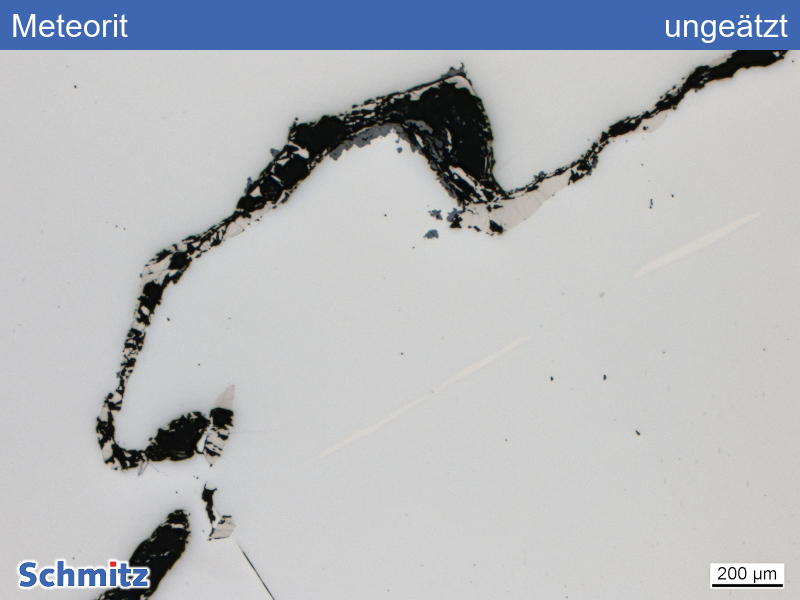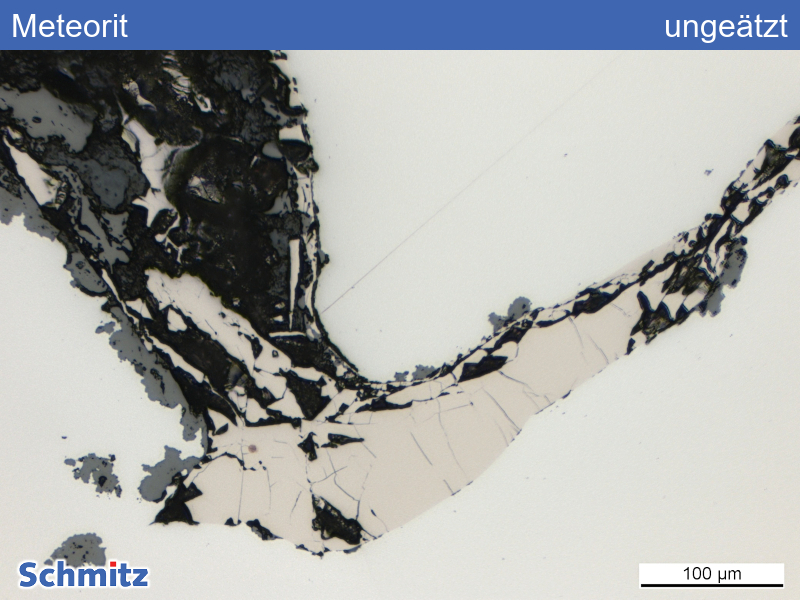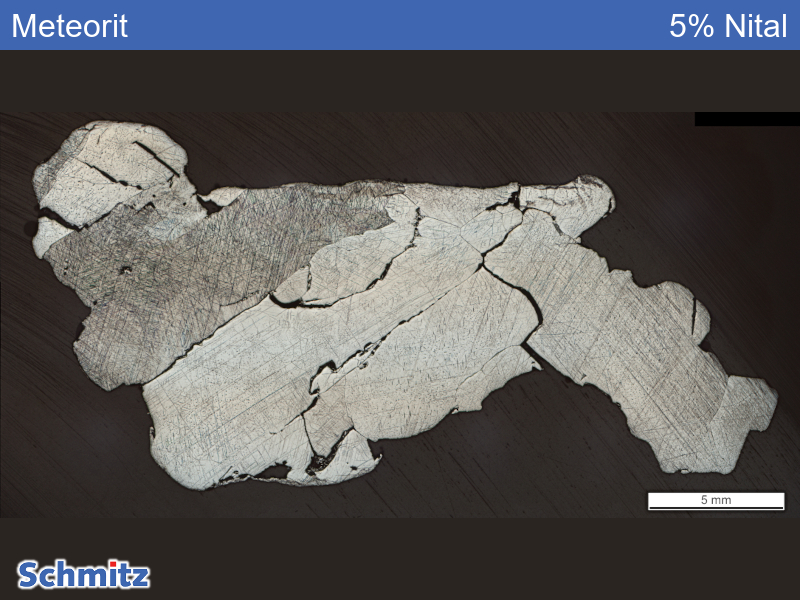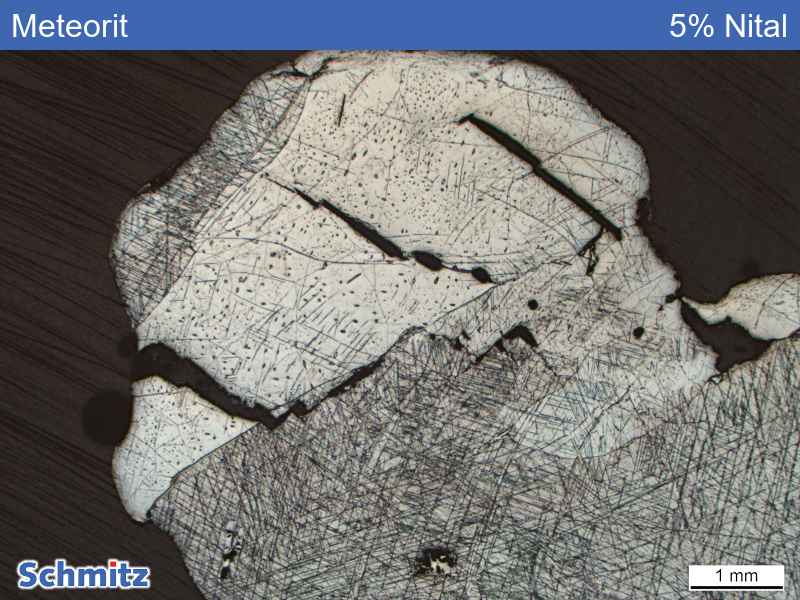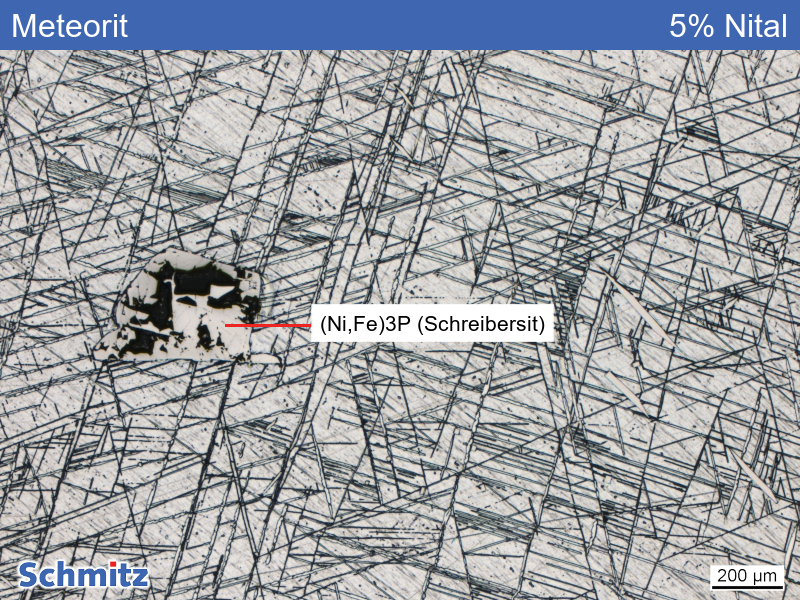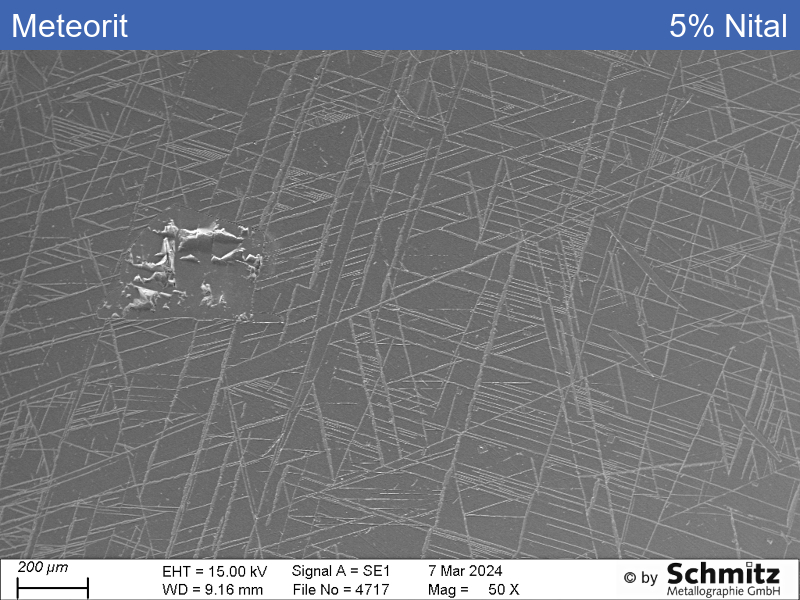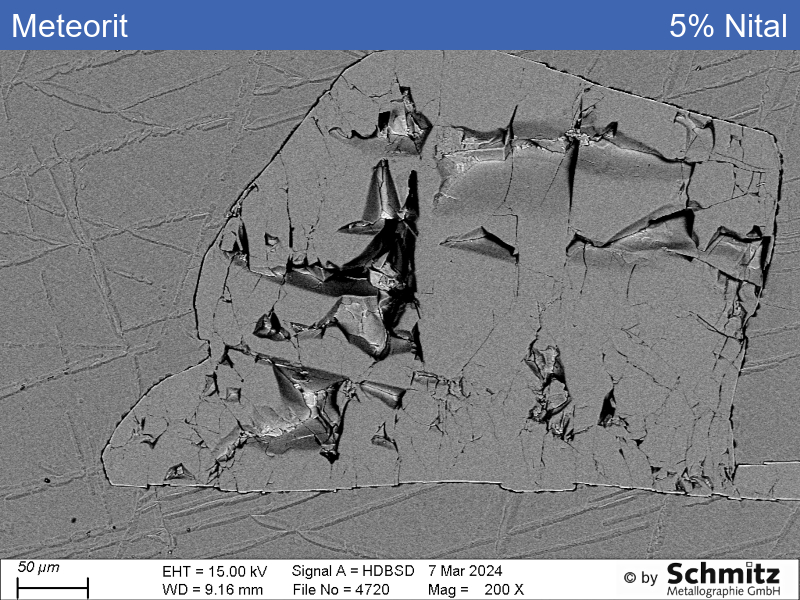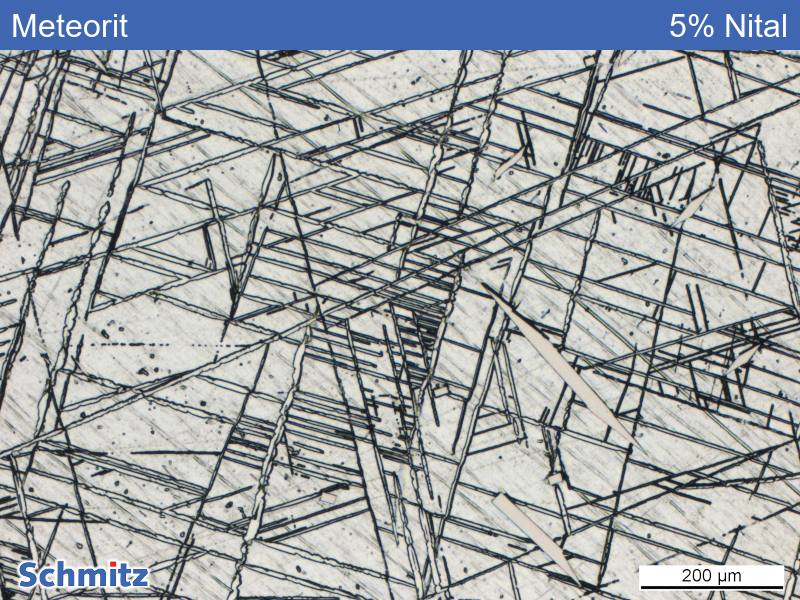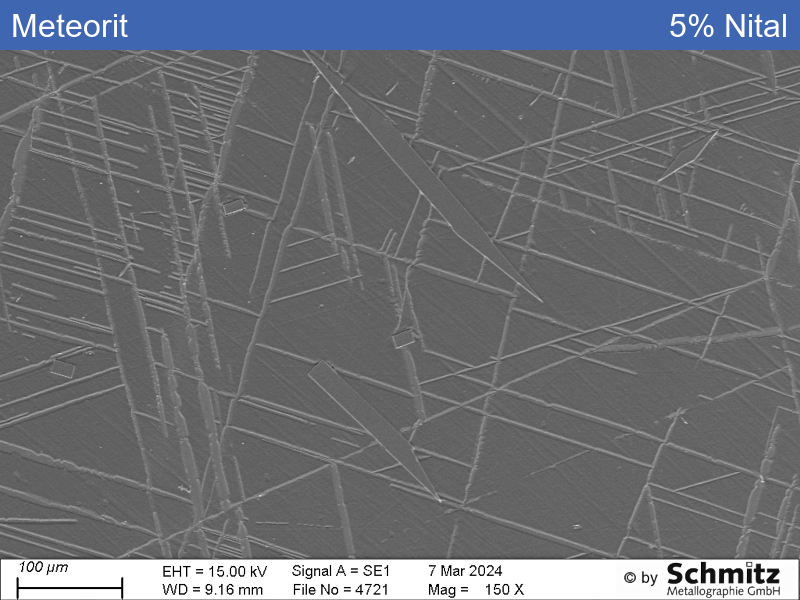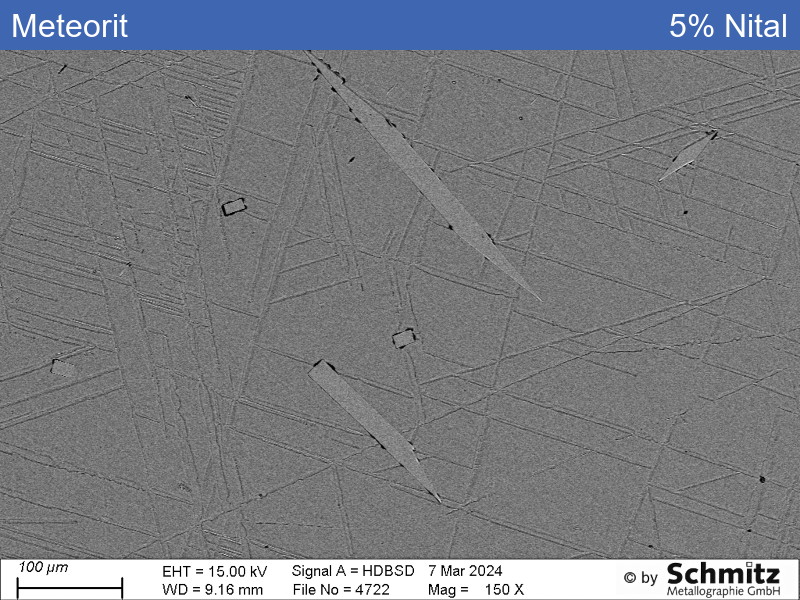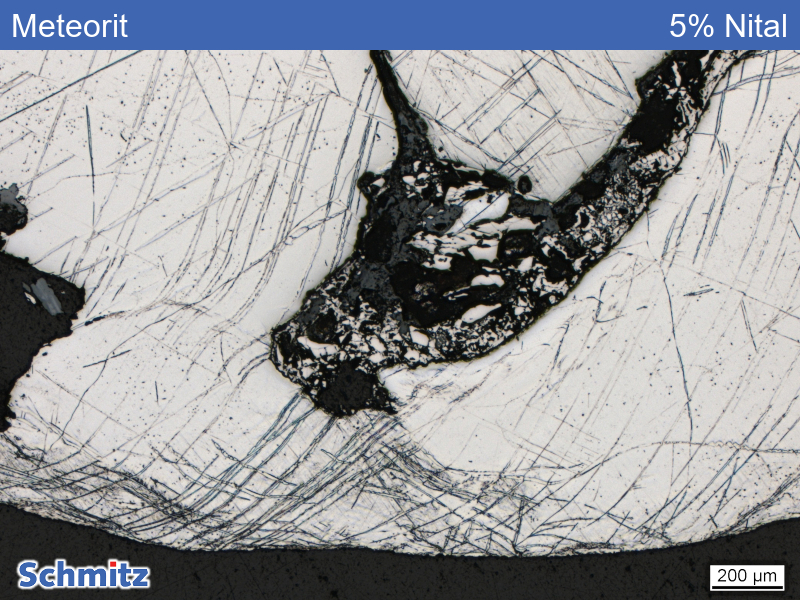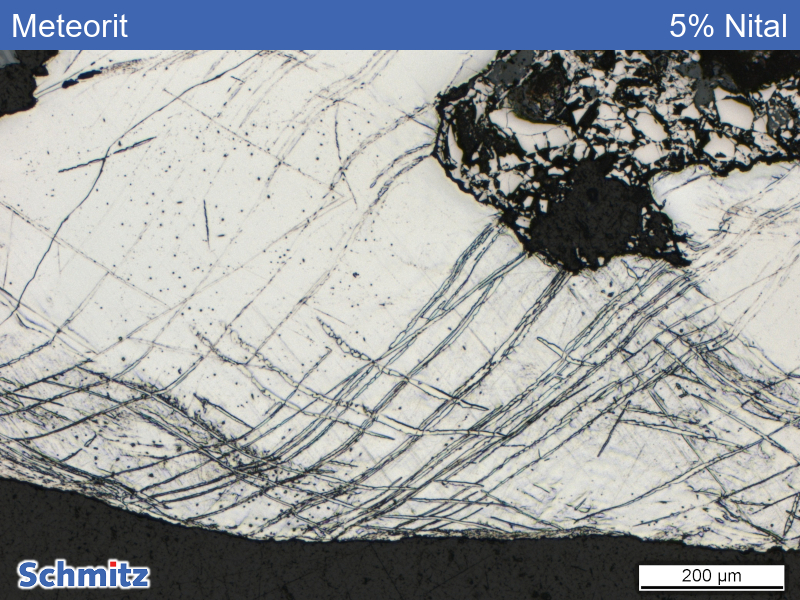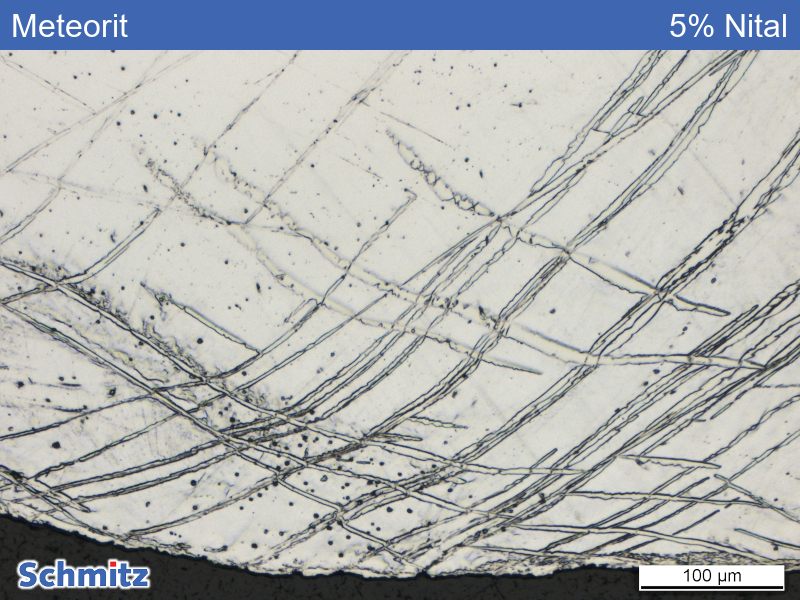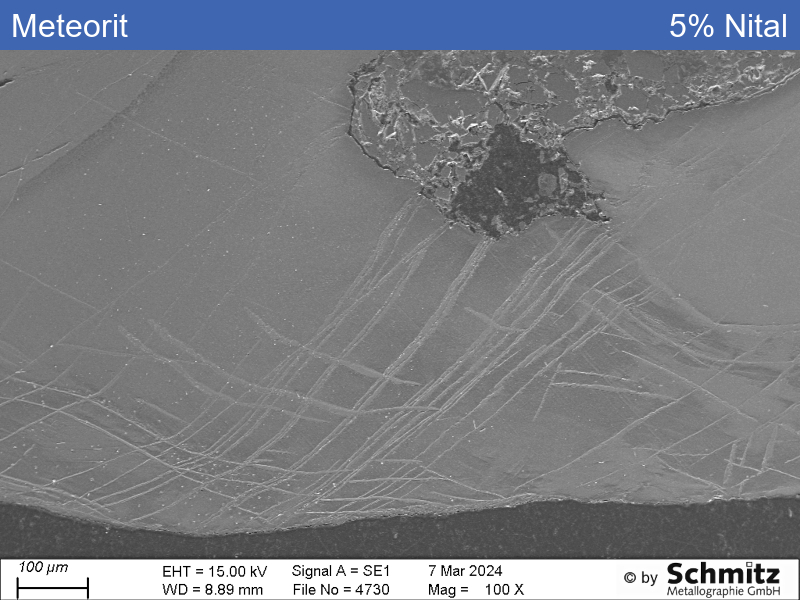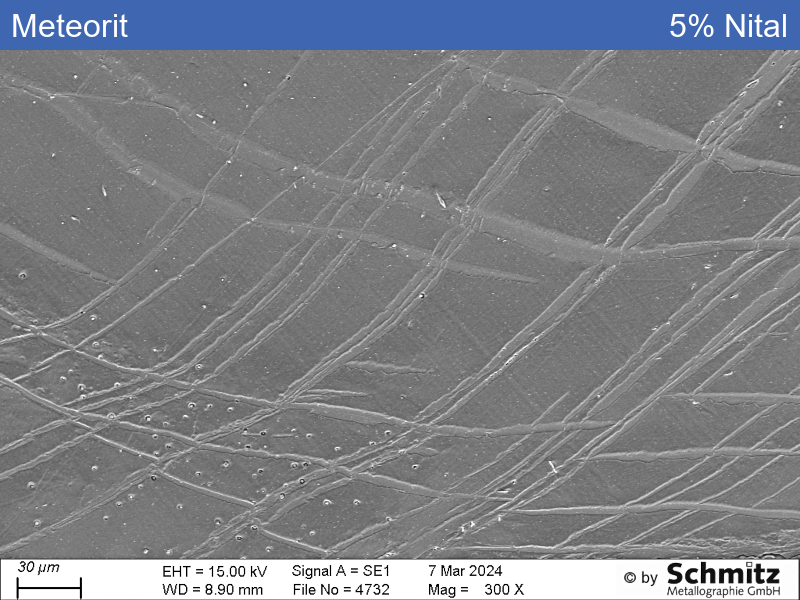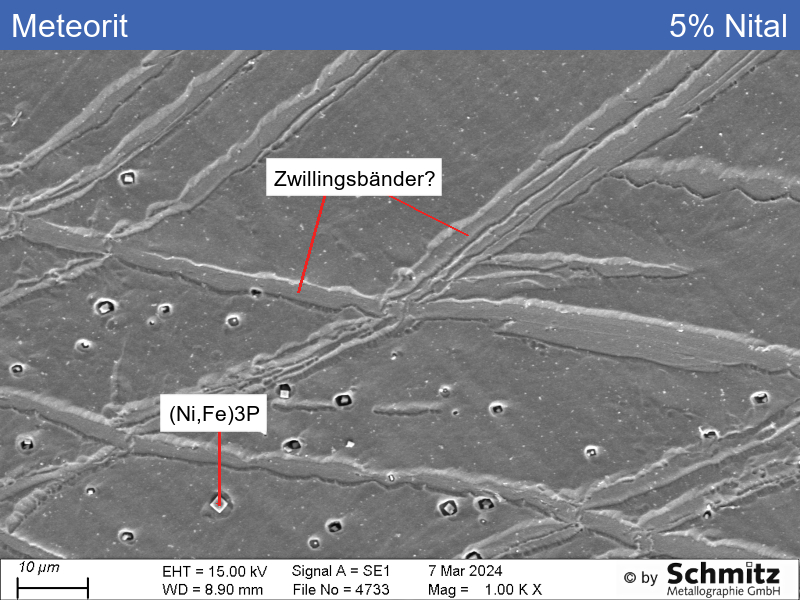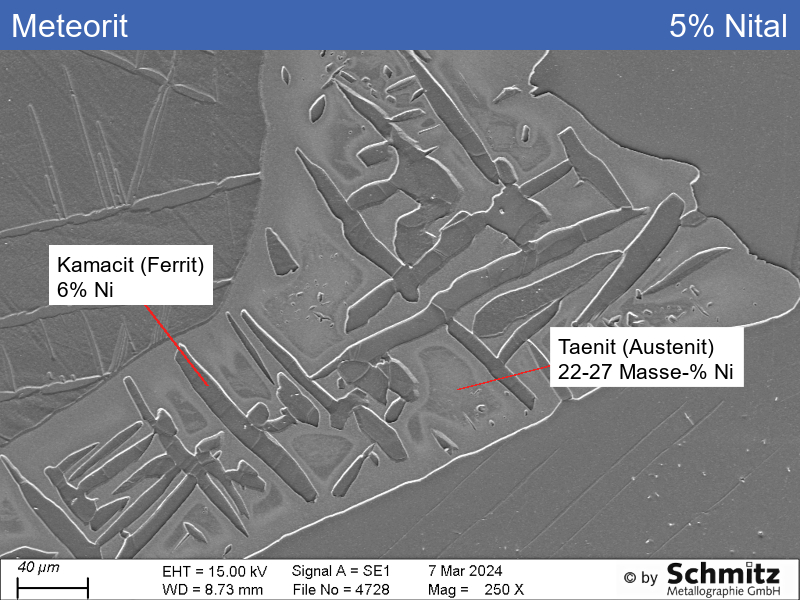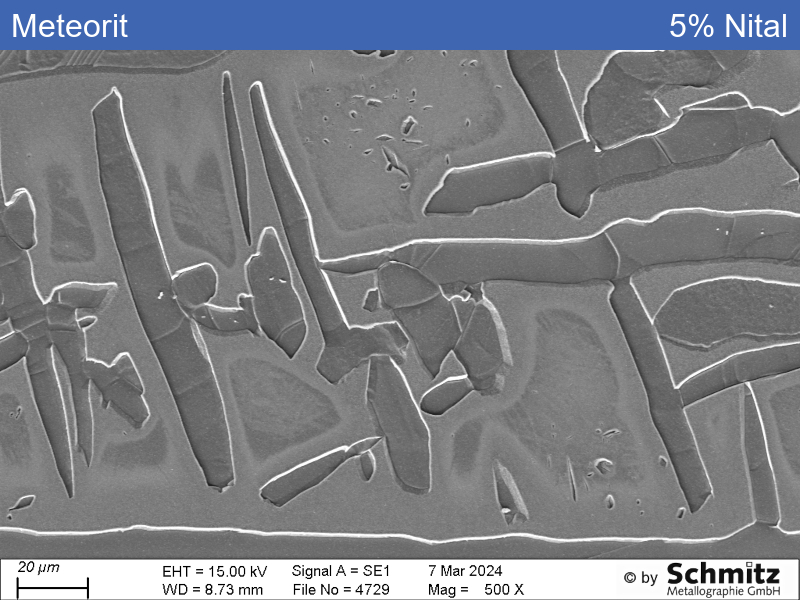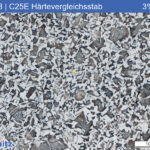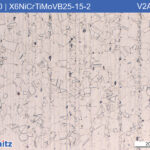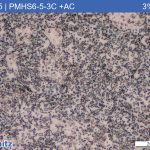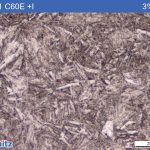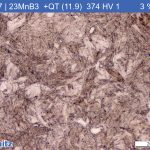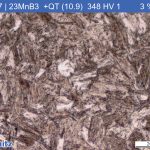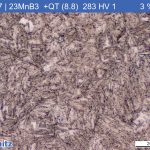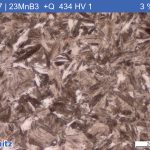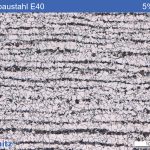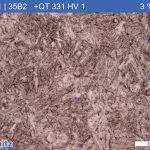Meteorite “Campo del Cielo” Argentina
| Chemical designation | Meteorite "Campo del Cielo" Argentina |
|---|---|
| Etching | 5% Nital |
The sample, which according to XRF contains 6.6% nickel and 0.14% phosphorus (remainder: iron), originates from a meteorite discovered in Argentina in 1576, the impact of which dates back 4000 to 6000 years [1].
The structural components identified by EDX correspond to the literature on this meteorite:
According to this, the main component of the microstructure is “kamacite”, a body-centred cubic iron mineral, which in this case contains approx. 5-6% nickel (equivalent to ferrite). Only rarely does the significantly more nickel-rich, face-centred cubic “taenite” or gamma-(Fe,Ni) occur, which corresponds to austenite [1].
Here it occurs in an intergrowth with kamacite, which is known as “plessite”.
The mostly acicular or angular precipitates of a cream-coloured phase under the light microscope consist of phosphide (Fe,Ni)P3 (“schreibersite”). The distinctive line patterns that become visible during etching are chemically indistinguishable from the matrix and are therefore presumably Neumann lines (twin bands).
Literature:
[1] R. Haubner, S. Strobl, “Campo del Cielo – an Iron Meteorite found in Argentina”, Pract. Metallogr. 58 (2021), 9, 570-580

